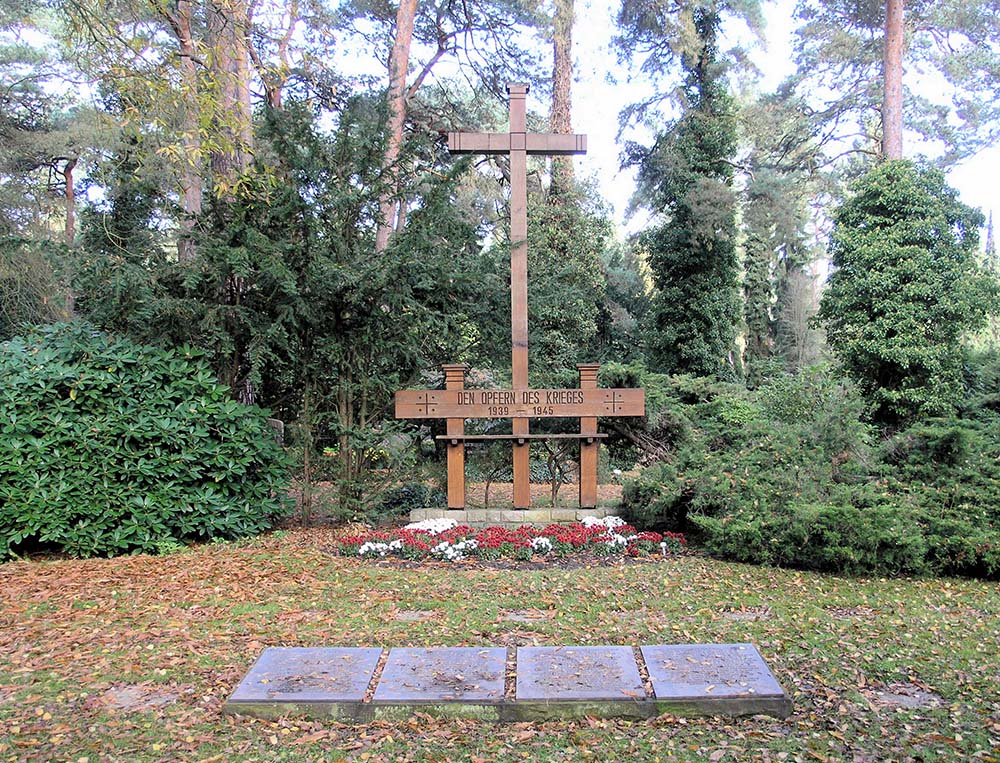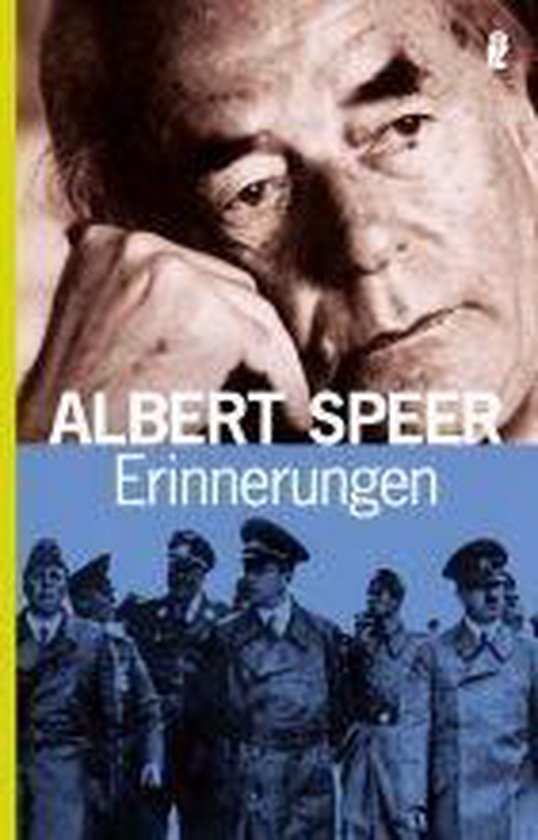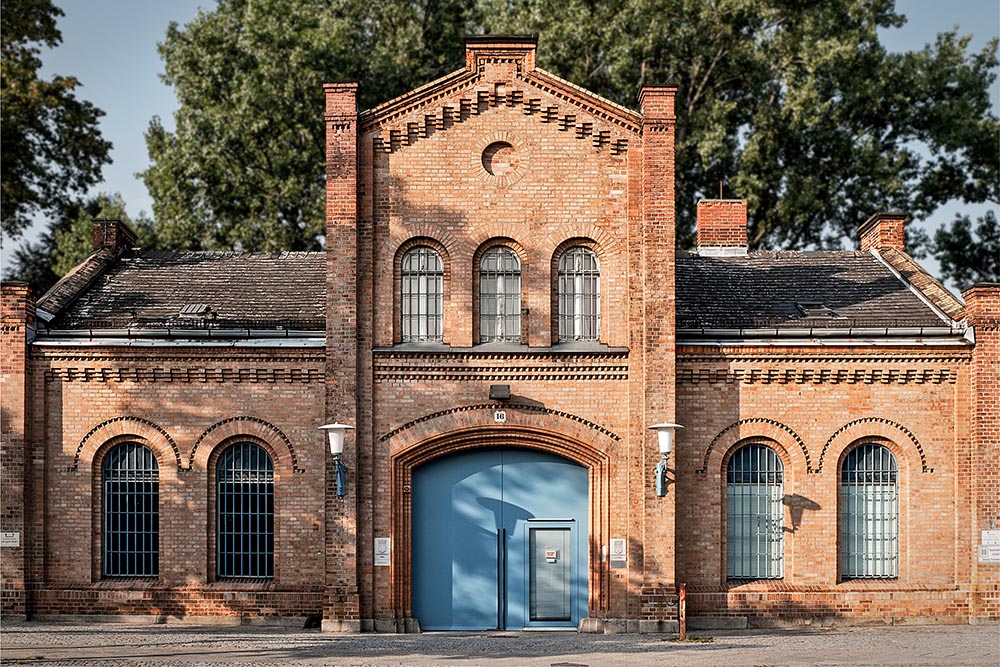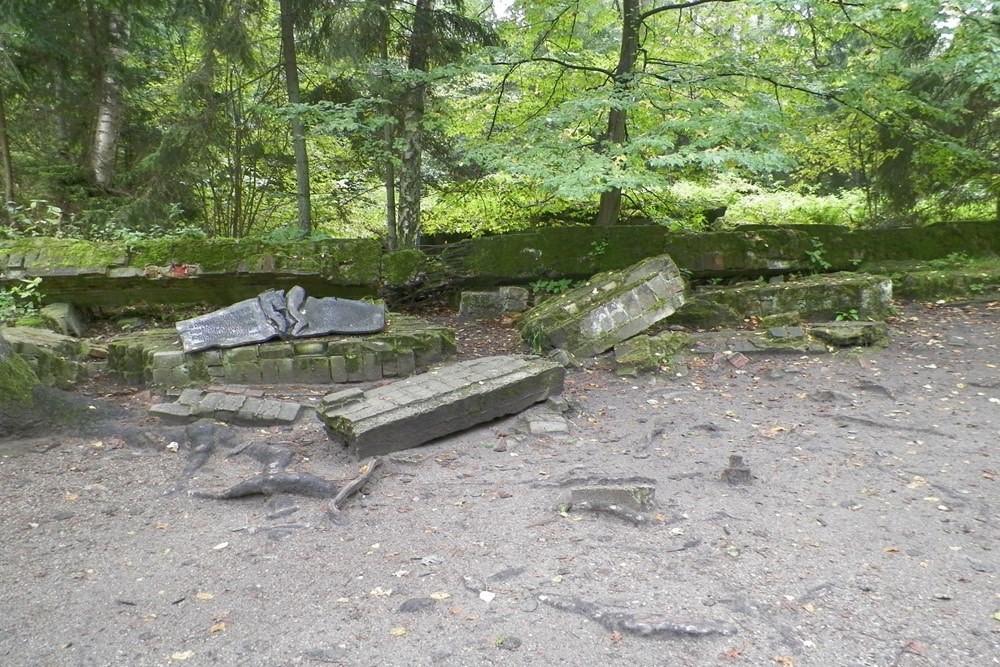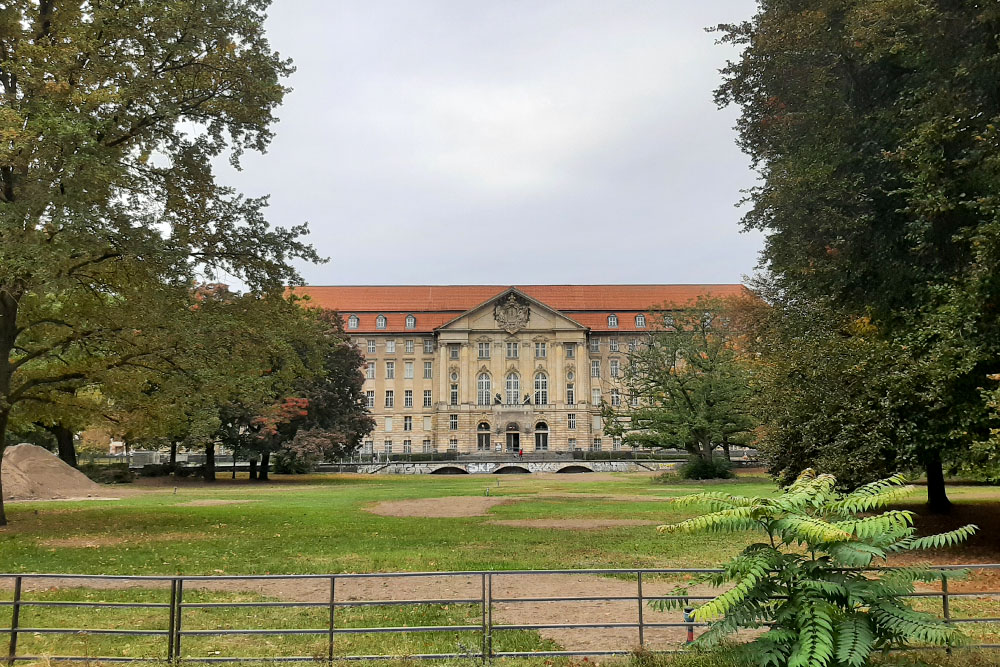Introduction
On July 20, 1944, the most famous of all planned attempts on the Führer took place in his HQ the Wolfsschanze (See: Coup of July 20, 1944). Hitler barely escaped death, resulting in a manhunt for the perpetrators. The main character, Claus Schenk Graf von Stauffenberg was executed in the inner courtyard of the Bendlerblock, the HQ of the Wehrmacht in Berlin along with three co- conspirators. Other defendants were executed in Plötzensee prison in Berlin. They would have been hanged in barbaric fashion with piano strings from meat hooks, causing the death struggle to last 20 minutes sometimes. The entire process was recorded on film and the movie was shown to members of the SS and other followers of Hitler. Discussion arose however whether Hitler had actually seen the movie. And what about the morbid piano strings and meat hooks, have they really been used?
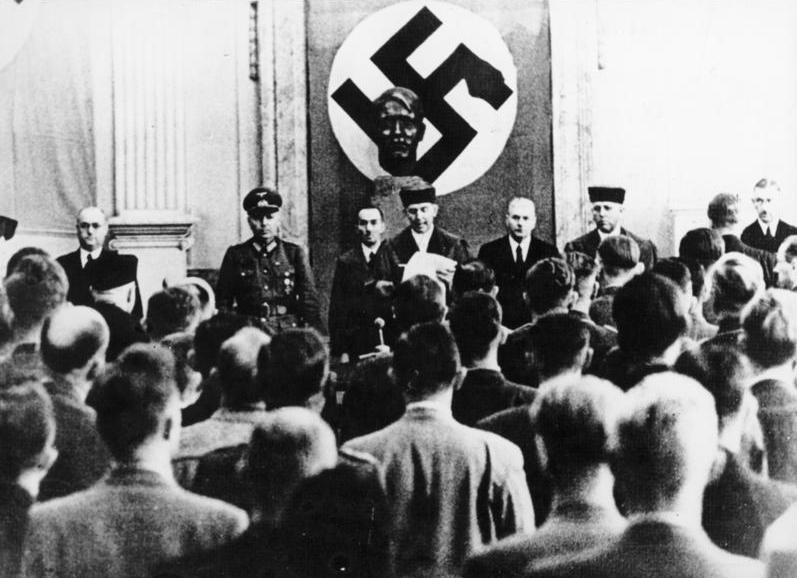
Roland Freisler reads the verdicts after the trial against those allegedly involved in the coup of July 20, 1944 Source: Bundesarchiv, Bild 183-C0718-0052-001 / CC-BY-SA 3.0
Prior to the attempt on July 20, Von Stauffenberg had already been in Hitler's vicinity with a bomb in his bag three times but each time he failed. This time as well, preparations didn't proceed as planned. It is said Von Stauffenberg didn't have the time to prime all explosives he carried before entering the room where Hitler held his meetings. Yet he placed the bag beneath a heavy oak table and left the room a few minutes later. When the bomb exploded, Von Stauffenberg was already on his way back to Berlin where an attempt would be made to seize power. Adolf Hitler had survived the explosion though and in the period that followed he would do his utmost to round up all conspirators and punish them heavily.
Von Stauffenberg was quickly arrested and executed in the inner courtyard of the Bendlerblock in Berlin. Other conspirators were taken to the Volksgerichtshof - People's Court - chaired by the fanatical Nazi judge Roland Freisler. On August 7 and 8, the first 8 conspirators were arraigned. The reason why they were to be tried by the Volksgerichtshof and not by a military court was obvious: Hitler didn't trust military justice and at the Volksgerichtshof, sentencing was a foregone conclusion. The defendants didn't stand a chance. 'Freisler used every trick in the book to humiliate, discourage and mock them'. The sentence was read the same day and executed immediately afterwards in Plötzensee prison in Berlin. Hitler himself had ordered the men to be hanged like carcasses.
Following the death of the first eight, there were dozens of trials with over a hundred death sentences. As a result of the attempt of July 20, some 200 persons were executed.
Definitielijst
- Führer
- German word for leader. During his reign of power Adolf Hitler was Führer of Nazi Germany.
- Nazi
- Abbreviation of a national socialist.
- Wehrmacht
- German armed military forces, divided in ground forces, air force and navy.
- Wolfsschanze
- Headquarters of Adolf Hitler in East Prussia.
Piano strings and meat hooks
Hitler may well have ordered the convicts were to be handled like animals but it seems that some elements from the stories about the execution are based on misunderstandings and the creation of myths. For instance, the stories about the men being hanged with piano strings from meat hooks are not correct. In his description, Ian Kershaw mentions nothing about piano strings and in his words they were hooks that looked like meat hooks at best and the head of the Gedenkstätte Deutscher Widerstand, Johannes Tuchel, talks about a rail with 8 to 10 hooks from which the convicted were hanged. Those were no meat hooks. The hooks had been fitted as early as 1942 and weren't even destined for the execution of the conspirators of July 20, 1944. The assumptions that there was a question of meat hooks are probably attributable to people like Hitler's private adjutant Heinz Linge who said that Hitler wanted to see the convicts 'hanging like slaughtered cattle' and so indirectly from Hitler himself.
It is very unlikely that piano strings had been used either. A member of the prison staff only talked about 'short, thin cords' and not about those famous piano strings. These cords were attached to the hooks mounted on the rail prior to the execution of the convicts.
Moreover, it was said that for some convicts, it took no less than 20 minutes before they died. As extra humiliation, the hangmen are said to have pulled down the trousers of a convict or hanged them completely naked. There is no evidence though as to the undressing of convicts or a death struggle sometimes taking a very long time. Camera operator Sasse declared that the execution of the sentences progressed quickly and death set in very soon.
The movie
The executions of August 8 have probably been recorded on film. The movie must have started with shots of the prisoners in their cells, shortly before the execution after which the hanging themselves were recorded. It is unclear however where the movie is today. The American intelligence agency, the Office of Strategic Services or OSS would probably have received information on the recordings and the method of execution but whether they eventually were in possession of the movies is unlikely. Walter Frenz, one of the best known movie makers in the Third Reich, thought after the war they still existed but Heinz Sasse, who had recorded the movie himself, didn't think so.
The movie allegedly would have been stored in a safe in the Ministry of Propaganda in Berlin on January 17, 1945 but after the war it had disappeared. For the time being, the material has not been recovered yet despite the efforts of TV companies that had searched the East-European archives after they had been opened to the public.
Witnesses
So, evidence as to the existence of the movie has to come from witnesses. There are enough of them but not each testimony is clear or reliable. Heinz Linge said that Hitler was being informed extensively about the proceedings at the Volksgerichtshof by means of 'films, photographs, transcripts and oral messages.' The question remains however if Linge was talking about the movie of the executions. The trial itself has been recorded as well and it can be seen how Roland Freisler is lashing out against the arraigned conspirators. Camera operator Erich Stoll recalled that before the first intermission on the first day of recording Freisler had shouted much too loud, making it impossible for the sound technician to get his loud voice and the soft voices of the defendants on tape properly. Despite the complaints the technicians made about it, Freisler kept yelling and screaming throughout the trials. The images recorded in the court room can even be found on YouTube today.
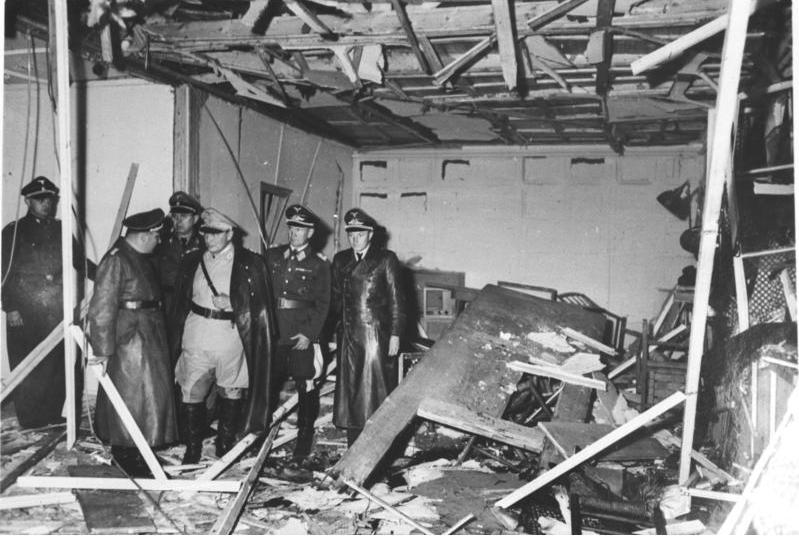
Hermann Göring and Martin Bormann visiting the location where on July 20, 1944, the attempt on Hitler was made. On the far left Heinz Linge, Hitlers adjutant Source: Bundesarchiv, Bild 146-1972-025-10 / CC-BY-SA 3.0
Ian Kershaw assumes that photographs and movies of the executions have actually existed. According to him, they were taken to Hitler's HQ in Poland. There, Albert Speer had seen pictures of the executions on Hitler's desk. A member of the prison staff remembered having seen spotlights and cameras being taken into the execution room. He also thought that all executions had been recorded by two operators. With these two men, he probably meant Erich Stoll and Heinz Sasse. Erich Stoll was the one filming the prisoners on their way from their cells, across the court yard to the execution room; Heinz Sasse, mentioned earlier, recorded the executions.
Did Hitler watch the movie
As Hitler has never visited a concentration camp and it is said that during his train journeys, he had the curtains of his carriage closed so he didn't have to see the ruins when passing bombed cities, it is therefore interesting to know whether or not he has seen the movies and the photographs. Various witnesses claim he had but according to Ian Kershaw, witnesses contradict each other and it has never become clear if Hitler has seen the movie of the execution
Albert Speer may well have seen a stack of pictures of the executions on the chart table in the Wolfsschanze but he would have taken one, half sunken in thought. When he saw a hanged man in prison garb, he would have put the pictures down immediately. Next an SS man told him it was Erwin von Witzleben, one of the convicts of the trial of August 8 and he asked whether Speer would like to see the rest of the pictures. He didn't want to. In the evening, the movie of the executions was played but he couldn't and wouldn't see it, he said himself. He did see various civilians and SS men enter the cinema of the Wolfsschanze. During a famous interview in the Playboy of June 1971, Speer stated that Hitler watched the movie time and again and that was weird. In his own books, Speer hadn't mentioned anything about it. The warning from historians, indicating that Speer's statements should be analyzed with lots of suspicion, seems to apply here as well. There are hardly any witnesses who confirmed Speer's statements. Many of Hitler's associates denied he had seen the movie. One of those was Hitler's adjutant, Nicolaus von Brelow who, regarding his function, was almost constantly in his vicinity. According to him, Hitler hardly looked at the pictures of the execution, just like he looked as little as possible at pictures of ruined cities and just like he never visited bombed cities.
Definitielijst
- concentration camp
- Closed camp where people are being held captive that are considered to be anti- social, enemies of the state, criminal or unwanted individuals. These groups mostly do not get a fair trial or are condemned to doing time in a camp.
- Wolfsschanze
- Headquarters of Adolf Hitler in East Prussia.
Insecurity
Needless to say, all sorts of stories popped up about the execution and the disappeared movie. Hooks to which cords could be attached were called meat hooks, the cords themselves became piano strings and the execution method, humiliating as it already was, was called extremely demeaning and inhuman. Of the examples thereof, hanging them naked and the horrible death struggle sometimes lasting 20 minutes, there is no evidence. According to the camera operator, the death struggle of the convicts was short and the story about undressing them could very well be a variation on Hitler's idea to hang the convicts dressed in prison garb and not in their uniforms. For military, that was enough humiliation in and of itself. What the situation had been exactly should be visible in the infamous movie but that has disappeared and whether Hitler has seen it or not remains unknown.
Information
- Article by:
- Sjoerd de Boer
- Translated by:
- Arnold Palthe
- Published on:
- 13-03-2023
- Feedback?
- Send it!
Related sights
Related books
Sources
- BELOW, N. VON, Als Hitlers Adjudant 1937-1945, Pour le Mérite, Selent, 1999.
- KERSHAW, I., Hitler - Hoogmoed 1889-1936, Het Spectrum, Utrecht, 2003.
- KERSHAW, I., Hitler - Vergelding 1936-1945, Het Spectrum, Utrecht, 2003.
- LINGE, H., In het voetspoor van de Führer, Kadmos, 1985.
- MOORHOUSE, R., Hitler: de aanslagen, Nieuw Amsterdam Uitgevers, Amsterdam, 2007.
- ORTNER, H., Moordenaar in toga, Just Publishers, Meppel, 2014.
- SPEER, A., Erinnerungen, Ullstein Buchverlage, Berlijn, 2005.
'Vor dem Volksgerichtshof, Schauprozesse vor laufender Kamera’, prof. dr. Johannes Tuchel, in: Das Jahrhundert der Bilder 1900-1945



